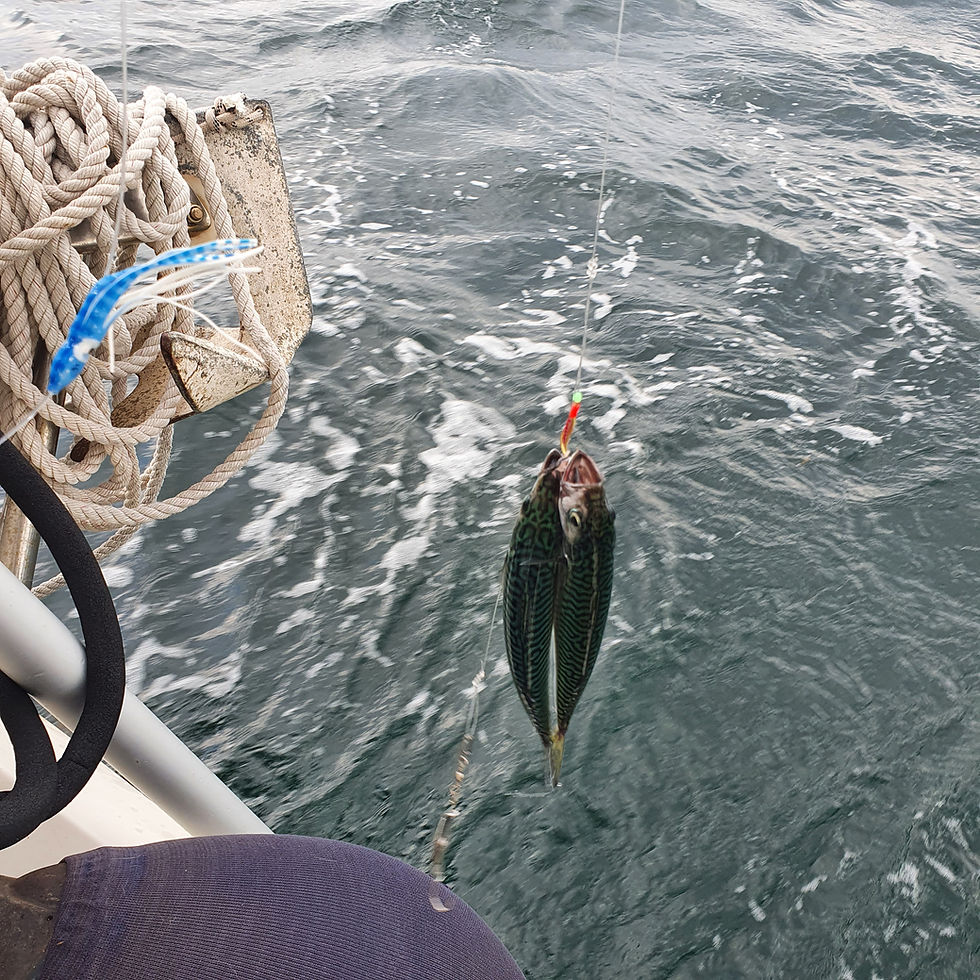Mediterranean waters
- Chris
- Sep 12
- 3 min read
The Mediterranean isn’t just turquoise bays and ancient harbors — it’s also a living pantry for sailors who love to fish. From shoals of mackerel to the mighty bluefin tuna, these waters offer plenty of opportunities to turn a sailing holiday into a fresh-catch adventure. Whether you’re planning a week in the Balearics or a season crossing from Greece to Spain, here’s what to expect and how to prepare.
The Big One: Bluefin Tuna Migration
One of the most iconic fish in the Med is the Atlantic bluefin tuna. These giants migrate through the sea each year, following baitfish and warm currents.
Spring (April–June): Bluefin enter the western Mediterranean, with hotspots off Spain, the Balearics, and southern France.
Summer (July–September): They spread east toward Italy, Malta, and Greece.
Autumn (October–November): Schools move back toward the Atlantic, feeding heavily along the way — particularly near the Strait of Gibraltar.
Bluefin can grow to hundreds of kilos, but sailors often encounter younger fish in the 10–30 kg range. With the HELM mounted on your stern, even a medium-heavy setup can put fresh tuna on the table.

More Than Tuna: Other Mediterranean Species
Not every catch is a monster, and that’s a good thing. The Med offers a wide variety of species perfect for lighter trolling gear:
Mackerel & Bonito – Coastal and current-line hunters, fast to catch and quick to cook.
Mahi-Mahi – Appear in late summer, often near floating debris.
Swordfish – Mostly a nighttime target but occasionally hooked on deep-diving lures.
Amberjack & Dentex – Strong reef hunters near rocky islands; excellent eating.
Fishing the Strait of Gibraltar & Portuguese Coast
Leaving the Med through Gibraltar is a sailor’s milestone — and a fishing hotspot. The strait acts like a funnel for migratory species. Tuna, bonito, and even swordfish pass through here in season.
Along Portugal’s Atlantic coast, you can expect:
Big bluefin & albacore tuna in summer.
Mahi-Mahi & skipjack further offshore.
Portugal is also home to world-class sportfishing charters — a great way to learn local waters before you rig your own lines.
Tips for Sailors Who Fish
Gear: Medium-to-heavy trolling rigs for tuna; lighter gear for bonito, dorado, and mackerel.
Speeds: 5–8 knots is the sweet spot for most pelagics, higher trollin
Lures: Feathers, small jet heads, and plugs for bonito/mackerel; larger skirted lures for tuna.
Rules: The Mediterranean is highly regulated, especially for species like bluefin tuna. Always check local fishing regulations and licensing before you set your lines.

Final Word
Fishing in the Mediterranean while sailing is less about filling the freezer and more about adding another layer to the journey. Some days you’ll sail all afternoon with no strike, and on others, the reel will suddenly come alive. Either way, having a line out makes the miles more exciting — and when you do land a fish, it turns an ordinary passage into a memory.
With lures chosen for sailing speeds and simple gear like the HELM, you don’t need to overcomplicate it. Think of fishing as part of the adventure, and enjoy the fresh catch when luck is on your side.
Planning a Med holiday? Try trolling a lure between anchorages, and share your catches with us. Tag @fishhelm on Instagram or drop a note on our site — we’d love to feature your stories.

